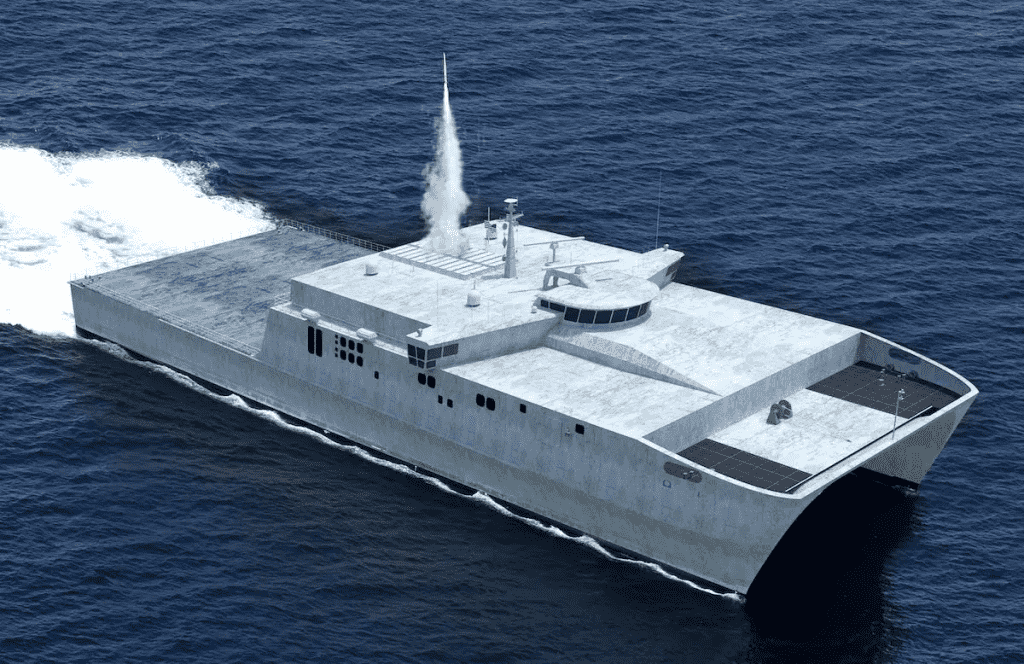The U.S. Navy’s Military Sealift Command (MSC) will be receiving its newest ship, the thirteenth in a series of high-speed EPF expeditionary transports providing logistics services around the globe. This will be the first EPF fitted with autonomous navigation and operating systems and will possibly be the world’s largest ship capable of unmanned operation.
They aim to use it as a logistics ship with the U.S. Seventh Fleet.
The Apalachicola was launched last November by Austal USA in Mobile, Alabama. Since June 2022, the ship has gone through several trials with varying complexity and distance.
The Naval Sea Systems Command (NAVSEA) is touting the ship’s accomplishments.
“In transit from Mobile, Alabama, to Miami, Florida, Apalachicola’s autonomous system completed a stress test in high-traffic coastal areas by taking appropriate ship handling actions while operating around other ships, boats, sailboats, and craft,” NAVSEA said in a Sept. 9 press release. “Overall, the ship was in autonomous mode for approximately 85 percent of the multiple-day at-sea period.”

Tim Roberts, NAVSEA’s program manager for Strategic and Theater Sealift, stated the value of the autonomous system.
“The ability to expand unmanned concepts into the existing fleet was validated by these trials,” Roberts said in the press release. “The capabilities integrated onto EPF 13 set the groundwork for future autonomous operations.”
The Navy did not ask for sponsorship for the unmanned fast transport, but Congress was quite moved by the proposal to add about $50 million in the fiscal 2021 defense appropriations act specifically to modify EPF 13.
The autonomous portion of the ship was developed under a $44 million contract given to Austal USA in June 2021. Austal USA said in a press release, “the work will include installation of a perception and autonomy control suite, as well as several automation enhancements to the machinery plant improving hull, mechanical, and electrical (HM&E) reliability while reducing the amount of personnel required for operations and maintenance at sea.”
Austal said, “the EPF provides the immediate capability to deploy a large autonomous weapons and logistics platform.”
Austal USA worked on the hull, mechanical and engineering components, and the machinery control system (MCS). The navigation autonomy and perception suite were developed by L3Harris. Lastly, General Dynamics Mission Systems took care of systems integration.
The ship’s navigation system also has General Dynamics – Applied Physical Sciences Corporation’s FutureWaves system. This gives real-time decision-making based on the situation in the sea.
Austal USA and MSC have confirmed that the autonomous systems will remain in place aboard Apalachicola when the ship is delivered. MSC will take the ship to Joint Expeditionary Base Little Creek in Virginia. There, it will be tested for normal post-delivery and post-shakedown shipyard availability. Afterward, it would be taken to San Diego and then to the western Pacific to perform logistics operations.
Currently, sources state that there are no approved Navy plans to use the ship as a developmental autonomous asset with the Ghost Fleet Overlord ships operating under NAVSEA’s Unmanned Maritime Systems (PMS 406) office.
Navy leadership will take Apalachicola up on its ability if the need arises. The service is in the process of finalizing the fiscal 2024 budget request due to Congress in February or March.


